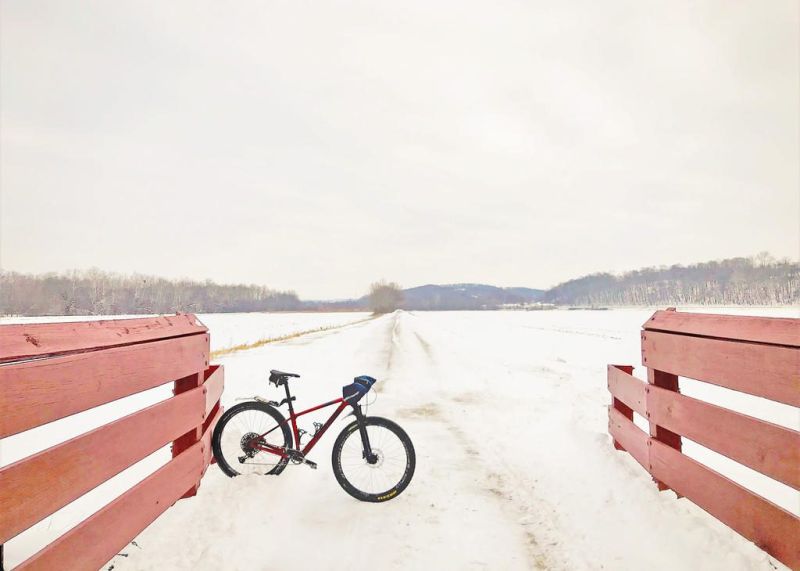Riding in winter an exercise in letting go
- John Lorson: The Rail Trail Naturalist
- January 25, 2022
- 771
Riding a bicycle on a snowy winter day may seem an odd or even foolhardy endeavor, but wintertime can offer darn near as many opportunities to get out and play as summertime, and it even comes with an added bonus — there’s not a mosquito to be found. The trick is you need to prepare a bit more and likely bring a little patience to the game.
Folks tend to dismiss the thought of riding a bike in sub-freezing temperatures as a fool’s game. For those folks it clearly would be. If you don’t have a particular need to be on two wheels in the dead, hard cold of January, then the entire idea seems absurd. But need arrives in a lot of different packages, and while I don’t physically need to ride my bike to work on any given day (as do many of the folks I encounter along the way), I do have a little mental check box that requires daily attention. My day almost always begins and ends with a ride, and it takes an awful lot of rough weather to keep that from happening.
Until the past week, I’ve had a real glide up to this point in the winter. Even though the morning temperatures sometimes dipped into the teens, the Holmes County Trail was nearly always clear of snow or ice. In conditions like that, you need nothing more than a few extra layers of clothing and a little more maple syrup on your oatmeal to get to where you’re going.
The part about the oatmeal is no joke. We burn more energy over the same distance when it’s cold outside. As endotherms (warm-blooded creatures), we’ve got to overcome the outside temperatures to maintain a constant body temperature. Just like keeping the pipes from freezing in your home, the colder it gets outside, the more gas goes through the furnace to keep the place warm.
Even beyond biology, the physics of riding with more clothing on — more weight, less freedom of movement and, the big one, more frontal wind resistance — requires more energy to overcome. The last place you want to be on a frozen day is halfway down the trail with an empty tank. (A note to e-bikers, your battery’s charge doesn’t last nearly as long when it’s cold outside, so plan accordingly.)
Throw a little precipitation into the mix, and it’s a whole new ball game, but one you can enjoy if you go into it with a little bit of skill, focus and attitude. The first step in skill is making good equipment choices. I’ve just switched over from riding my commuter bike with slick, high-pressure tires to my mountain bike, which rolls on low-pressure knobbies that not only offer “grippy” traction, but also put a larger footprint on the ground. It’s not just the texture of the tire. The amount of rubber that comes in contact with the snow, ice or slush also keeps you upright and moving ahead.
Speaking of moving ahead, that’s actually your greatest challenge and largest advantage. Momentum is everything when it comes to riding on snow-covered trails. If you are rolling forward, the business of balance is infinitely easier. The gyroscopic effect of the wheels makes the entire endeavor of bicycle riding possible, and it can keep you safe and upright most of the time — that is if you let it.
The toughest thing to teach a cyclist about riding in rough conditions is to simply let go. I’m not talking about letting go of the handlebar, of course. Rather, simply loosen up your hands, arms and legs to allow the bike to move a little bit underneath you. Let the wheels find their way. Sometimes that way will be in the tire track of the rider that passed before you, and other times the bike will behave better in the virgin snow.
I recommend practicing in your yard before heading out to the hard-pack of the trail. You might find it to be the dumbest thing you’ve ever done. On the other hand, it might open up a whole new winter world. Just don’t forget to eat your oatmeal before you venture out.
Remember, if you have comments on this column or questions about the natural world, write The Rail Trail Naturalist, P.O. Box 170, Fredericksburg, OH 44627, or email jlorson@alonovus.com. You also can follow along on Instagram @railtrailnaturalist.

